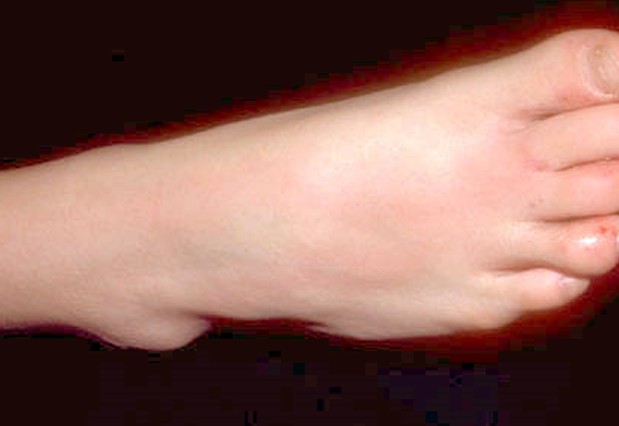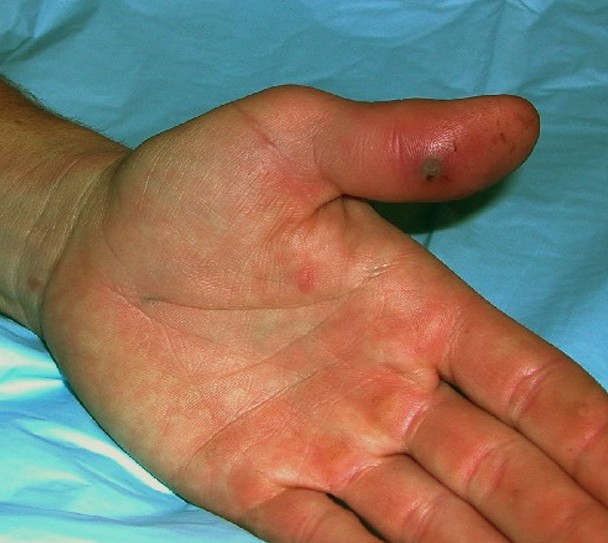Lymphangitis
Last reviewed by Dr.Mary on September 20th, 2019.
Lymphangitis is an inflammation of the lymphatic channels that happen because of an infection most commonly caused by Streptococcus pyogenes, the bacteria that causes strep throat. It is also often caused by infections of the heart, spinal cord, and lungs. Due to its ability to cause lymphangitis, this bacterium is also often discussed as “flesh-eating bacterium.” The Staphylococci bacteria may also be a cause of lymphangitis.
As bacteria move through the lymphatic structure, they make the vessels inflamed. This inflammation creates red streaks that are typical of lymphangitis. Subsequently, this bacterium multiplies, the system of immunity is not able to respond fast enough to stop the infection from developing.
This inflammation of the lymphatic vessels and channels which is characterized by specific inflammatory conditions of the skin referred to as bacterial infections. Thin red lines might be observed running along the entire course of the lymphatic vessels in the affected area, accompanied by enlarged and painful nearby lymph nodes. When left not treated, this condition may spread quickly throughout the blood system and in some cases can be fatal.
What are the symptoms of lymphangitis?
Symptoms and signs of lymphangitis consist of:
- The appearance of red streaks on the skin: Lymphangitis in the arm, back of the leg, in hand from a wound, or in the finger.
- Redness of the skin particularly on the face, ear, neck, arm, leg, ankle, foot, hand, back, chest
- Swelling of the skin
- Skin warmth
- Skin pain
- Leg pain and Leg pain – bilateral
- Swollen lymph glands – localized
Additional symptoms of Lymphangitis might include:
- Fever
- Chills
- Headache
- Rash
- Vomiting
Causes of lymphangitis
Lymphangitis is known by the painful, red streaks that can be observed beneath the skin surface. These streaks typically run from the origin of the infection to the armpit or groin area. The entire arm might swell, and blisters start to develop.
The bacteria causing lymphangitis may get into the body in many ways. Entry methods that are common include cuts, surgical wounds, scratches, insect bites, and other types of skin wounds. After the bacteria enter the lymphatic system successfully, they can multiply and move throughout the system.
When lymphangitis is left untreated, the infection may eventually destroy the tissue in the site where the infection first developed. This allows abscesses that are painful, pus-filled lumps to form. The skin layers that are lower might become infected as well which is how lymphangitis enters the bloodstream.
Some individuals are more at risk for developing lymphangitis than others. Women who have had a mastectomy that involves removing the breast as well as the lymph nodes are most prone to the development of this condition. Individuals that have had a leg vein removed to perform a coronary bypass surgery also are at high risk.
Treatment
Lymphangitis treatment is dependent on the underlying reason for the infection. Treatment usually includes rest, warm compresses, elevation, antibiotics as well as non-steroidal anti-inflammatory medication or NSAIDs for pain.
Options for treatment for lymphangitis might include:
- Rest
- Compresses that are warm
- Elevation of the area that is affected
- Non-steroidal anti-inflammatory medications for pain:
- Ibuprofen (Motrin, Nuprin, NeoProfen, Advil)
- Ketoprofen (Orudis, Actron, Oruvail)
- Naproxen (Naprosyn, Aleve, Aanaprox)
- Pain medication narcotic:
- For moderate to severe pain
- For short-term use only
- Antibiotic therapy:
- Dicloxacillin
- Cephalexin (Keflex)
- Nafcillin
- Cefuroxime (Zinacef)
- Ceftriaxone (Rocephin)
- Trimethoprim and sulfamethoxazole (TMP/SMZ, Bactrim, Septra)
- Clindamycin (Cleocin)
Surgery for lymphangitis
Aspiration by a needle for lymphangitis:
Removing fluid that is infected from an abscess by a needle.
Drainage and incision for lymphangitis:
Making an incision through the skin to drain an abscess.
Incision and drainage:
- Skin is sterilized using antibacterial soap or rubbing alcohol.
- A local anesthetic is injected in the tissues that surround the abscess.
- An incision is then performed by a scalpel.
- The abscess is drained of pus.
- Abscess cavity is cleanly flushed.
- In some instances, a strip of sterile gauze or a rubber drain is packed in the cavity of the abscess.
- The drain or gauze is put inside the cavity and is usually removed in 24-36 hours.




